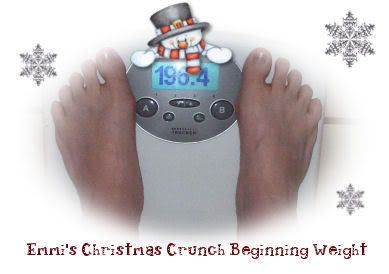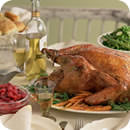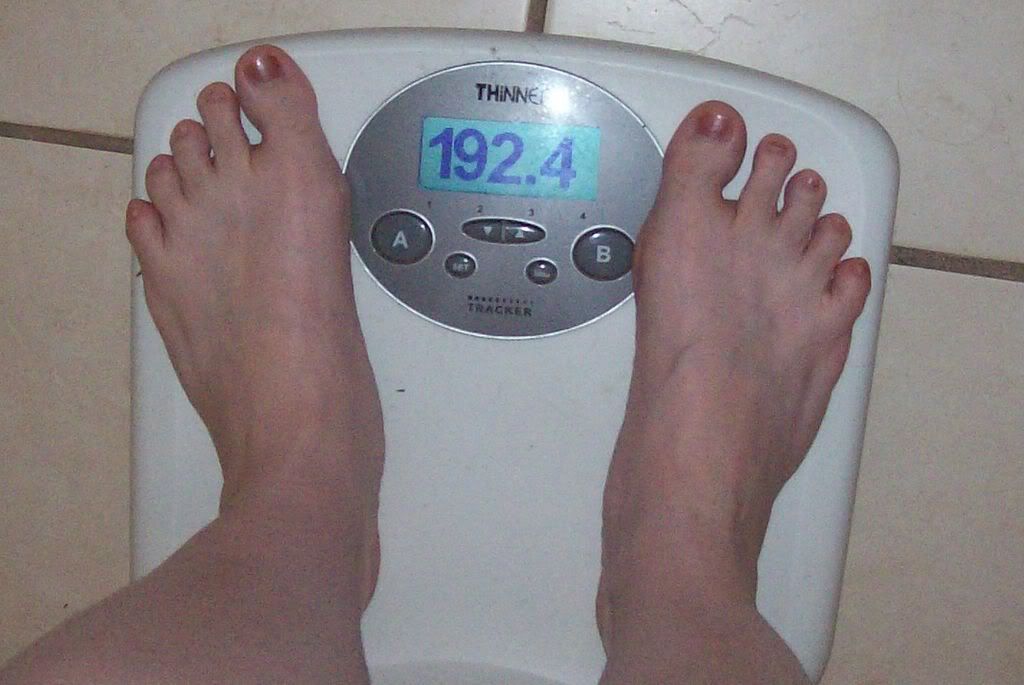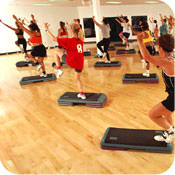First things first ... THANK YOU so much to all of you who commented, left well wishes, prayers, & gave me calls. It really means the world to me to know that so many of you care.
Fingers crossed ... DH is now home & was given a diagnosis of myocarditis (imflamation of the heart). Below is the definition of what it is. It's pretty lengthy so you won't hurt my feelings if you don't read it. Anyway, DH is still hurting a bit in his chest but they gave him meds to help manage his pain. He is only to work & do activity as tolerable ... he's stubborn so this will take an act of God to get him to sit still. His 1sgt & commander are trying to get him convalesant leave or at least quarters. They know he isn't up to work but without it in writing DH will show up tomorrow morning bright & early. He just doesn't know how to sit back & relax. I'm not sure he has much of a choice though ... almost thought he was gonna have to stay an extra night. The doc came in, gave him the all ok speach & said release papers would be in soon. He got up to get dressed & when he sat back down he clung to his chest ... had to call the nurse in for more pain meds. He pretty much refused to stay ... I can understand though, I'm pretty fond of my own space too.
Below is just what Myocarditis is ...
Definition of Myocarditis
Myocarditis is an inflammatory condition involving the myocardium (heart muscle).
Description of Myocarditis
Myocarditis is characterized by a variety of symptoms ranging from fatigue, difficult breathing, and rapid heartbeat to sudden death from fatal arrhythmia (abnormal heart rhythm).
Myocarditis may occur following a wide assortment of diseases, including bacterial and viral infections, immune system disorders, and the production of myocardial toxins by the body, as well as chemical and radiation exposure.
In the early 1900s, myocarditis was recognized as the cause of many cases of congestive heart failure, and a regimen of strictly enforced bedrest was prescribed as being the only treatment having beneficial effects. In spite of the multitude of advances in definition, diagnosis and treatment, this may still be the most effective treatment.
The introduction of endomyocardial biopsy (removal of small amounts of heart muscle for microscopic analysis) now allows a histological, rather than clinical diagnosis. Only 30 percent of the patients with clinical symptoms of myocarditis are shown to have unequivocal biopsy diagnosis - the reason for this discrepancy is controversial. Cardiac imaging, in the form of angiography or computerized tomography, seldom helps in making a definitive diagnosis of myocarditis.
Causes and Risk Factors of Myocarditis
Many organisms can infect and injure the heart. Type B, a virus among those that usually infect the gastrointestinal tract, is believed to be the most common offending agent. Many other viruses, such as those of polio, rubella and influenza, have been associated with myocarditis.
It is not clear why the same viruses cause myocarditis in some patients and different diseases - gastroenteritis, pneumonia, or hepatitis, for example - in others.
Myocarditis can occur as a rare complication of bacterial infections, including diphtheria, tuberculosis, typhoid fever, and tetanus. Other infectious organisms, such as rickettsiae and parasites, may also cause inflammation in the heart muscle.
In Central and South America, myocarditis is often due to Chagas disease, an infectious illness that is transmitted by insects.
Symptoms of Myocarditis
Symptoms of myocarditis vary widely.
In adults, they can sometimes mimic those of a heart attack - mild to severe pain in the center of the chest, which may radiate to the neck, shoulders, and upper arms. In severe cases, symptoms include breathlessness, rapid pulse, and heart arrhythmias.
In infants, symptoms may also include bluish skin, heart murmurs, and a poor appetite.
Myocarditis may be suspected whenever chest pain or arrhythmia symptoms suggestive of congestive heart failure occur during the course of an infectious illness, especially a viral one. It should also be suspected when such symptoms occur in the absence of an obvious diagnosis.
Myocarditis may start as a flu-like illness that lingers longer than the usual several days. If significant muscle damage and weakening of the heart's chambers occur, symptoms of heart failure may develop. A month or two later, the symptoms of flu (weakness and malaise) merge with symptoms of heart failure (fatigue during physical activity and shortness of breath).
If the illness is persistent and progressive, symptoms become disabling enough for the person to consult a physician. By this time, however, the infecting organism usually cannot be detected or cultured from the heart or other places in the body. By the time the patient seeks medical help, all traces of the infecting organism or disease process that may have triggered the condition may be undetectable.
Diagnosis of Myocarditis
Diagnosis may require blood tests, a chest X-ray, electrocardiogram or radionuclide angiocardiogram, and, in rare cases, biopsy of a tissue sample from the heart muscle.
Treatment of Myocarditis
Mild, viral-related myocarditis in adults cures itself with little or no direct treatment. Similarly, mild cases caused by other types of infection often require only taking antibiotics or other drugs to treat the underlying disease.
More severe myocarditis may cause marked heart arrhythmias and heart failure if inflammation sufficiently damages the heart muscle or myocardium.
In such cases, medications to stabilize heart function may be necessary. These may include vasodilators, digitalis, diuretics, ACE inhibitors, and other drugs. In certain severe types of myocarditis, steroids may be prescribed.
Sometimes even after myocarditis is resolved, the heart muscle remains permanently damaged. If a heart block or marked slowing of the heart rate occurs, a pacemaker may be required. In advanced, severe cases, cardiac transplantation may be the only alternative.
During the acute phase of myocarditis, patient are advised to rest and gradually return to a more active lifestyle once evidence disappears of ongoing inflammation and heart injury.
Many cases of myocarditis cause minimal heart damage. Heart function fully recovers in these mild cases. Occasionally, severe cases of myocarditis also clear up spontaneously and leave little permanent damage. More typically, however, severe inflammation produces chronic, progressive, and irreversible heart damage.











.jpg)
.jpg)










.jpg)
.jpg)
 The package says; In Denise Austin's "Blast Away The Pounds: Indoor Walk," 3 Complete 1-Mile Programs, you will receive the health and weight-loss benefits of walking up to three miles outside - from your own living room! The program consists of three walking-based workouts with increased intensity, each focused on engaging both the lower and the upper body for maximum calorie burning while increasing your stamina and endurance. The Complete Walking Program: "Easy Walk" - Tailored for those unaccustomed to regular exercise, this 15-minute walk is also the perfect calorie-burning exercise for before or after dinner. Calorie Burning Equivalent: 1 Outdoor-Walking Mile. "Fat Blasting Interval Walk" - This 15-minute cardio walk gets the heart pumping, energy flowing and fat burning by alternating pace intensity and between lower-body and upper-body moves. It's the perfect metabolism-boosting workout. Calorie Burning Equivalent: 1 Outdoor-Walking Mile. "Power Walk And Tone" - This vigorous 15-minute routine combines power walking and sculpting techniques to firm and tone the major muscles, while blasting away pounds for a sleek and slender body. Calorie Burning Equivalent: 1 Outdoor-Walking Mile. "Stretch" - Designed to relax and tone all major muscles and joints, this 10-minute bonus stretch is the perfect way to jump-start and unwind your day.
The package says; In Denise Austin's "Blast Away The Pounds: Indoor Walk," 3 Complete 1-Mile Programs, you will receive the health and weight-loss benefits of walking up to three miles outside - from your own living room! The program consists of three walking-based workouts with increased intensity, each focused on engaging both the lower and the upper body for maximum calorie burning while increasing your stamina and endurance. The Complete Walking Program: "Easy Walk" - Tailored for those unaccustomed to regular exercise, this 15-minute walk is also the perfect calorie-burning exercise for before or after dinner. Calorie Burning Equivalent: 1 Outdoor-Walking Mile. "Fat Blasting Interval Walk" - This 15-minute cardio walk gets the heart pumping, energy flowing and fat burning by alternating pace intensity and between lower-body and upper-body moves. It's the perfect metabolism-boosting workout. Calorie Burning Equivalent: 1 Outdoor-Walking Mile. "Power Walk And Tone" - This vigorous 15-minute routine combines power walking and sculpting techniques to firm and tone the major muscles, while blasting away pounds for a sleek and slender body. Calorie Burning Equivalent: 1 Outdoor-Walking Mile. "Stretch" - Designed to relax and tone all major muscles and joints, this 10-minute bonus stretch is the perfect way to jump-start and unwind your day.
 Make it Through the Day...Guilt-Free
-- By SparkPeople A gathering of close friends and family is one of the happiest times of year for all of us. Celebrations like Thanksgiving can distract us from our everyday worries…but they can distract us from our diets too. Here’s what you need to know so that the only thing you’re "adding on" this holiday is joy.
Make it Through the Day...Guilt-Free
-- By SparkPeople A gathering of close friends and family is one of the happiest times of year for all of us. Celebrations like Thanksgiving can distract us from our everyday worries…but they can distract us from our diets too. Here’s what you need to know so that the only thing you’re "adding on" this holiday is joy. A Meal That Pleases Your Body and Taste Buds
-- By Zach Van Hart, Staff Writer
A Meal That Pleases Your Body and Taste Buds
-- By Zach Van Hart, Staff Writer


 A Checklist for Fitness Facilities
-- By Liz Noelcke, Staff Writer
A Checklist for Fitness Facilities
-- By Liz Noelcke, Staff Writer









